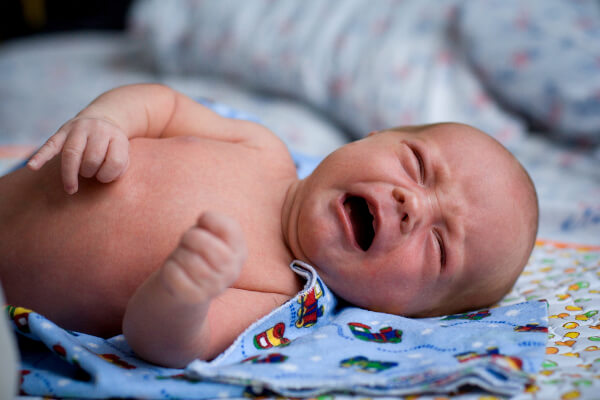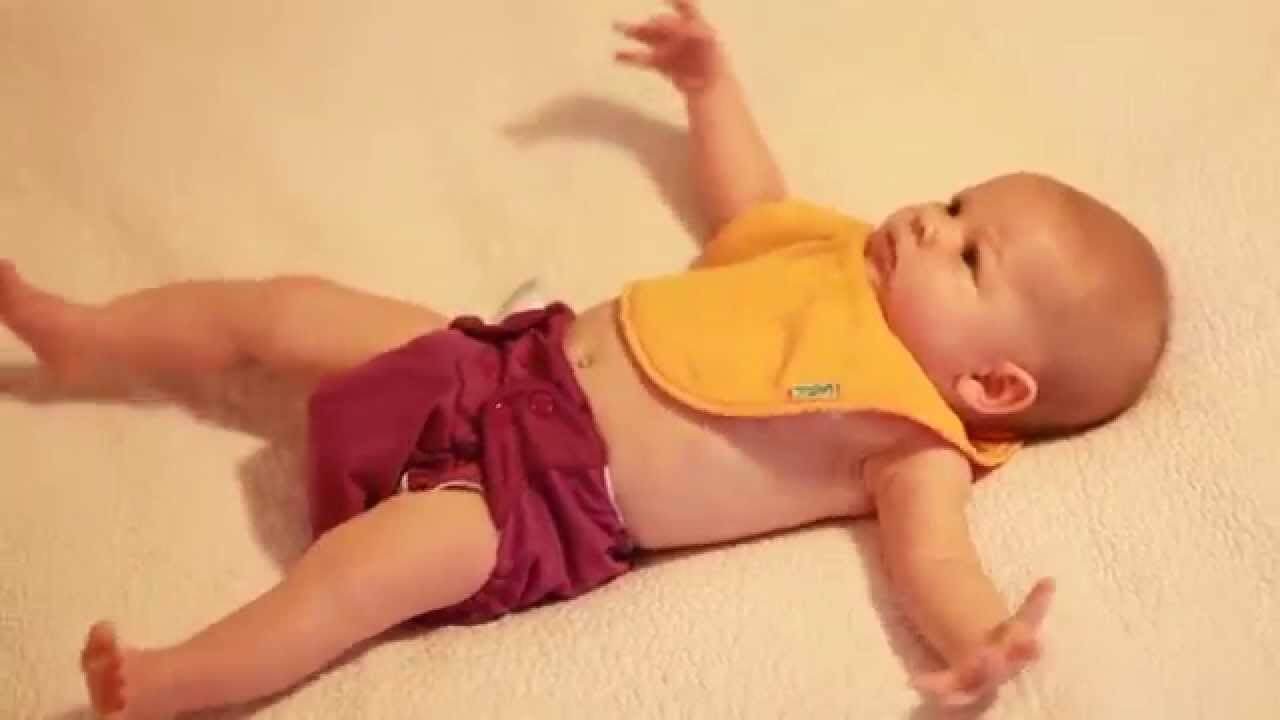The Moro Reflex In Babies


Written and verified by the psychologist Valeria Sabater
The popularly known “Moro reflex” is one of the first reflexes that humans present. When our children begin to develop this reflex, it sometimes startles us. Sometimes we even worry when we see those subtle jerks when the baby opens its arms and becomes rigid.
The first thing you should know is that there is nothing wrong when your baby does this. It is just an involuntary reflex that disappears when they reach around 4 or 5 months old.
In this article we’ll explain a bit more about the Moro reflex to clarify any questions you may have.
Why is it called the Moro reflex?
The Moro reflex owes its name to the Austrian pediatrician who studied it at the beginning of the 20th century: Ernst Moro. It is defined as the instinctive reaction that appears when the child believes that it does not have a safe point of support, or when they undergo a sudden change of position.
They can also present the Moro reflex when they hear an unexpected sound or when they realize they’re falling backwards. It is a decisive reflection of a baby’s development of its central nervous system.
Interestingly, the Moro reflex is linked intimately with fear and the feeling of threats. It is considered as the only fear that is not learned.
How, when and why?
During the first months of life, the nervous system (amongst other aspects) are in constant development. It is common to see a series of changes, such as crying or the Moro reflex. In other words, involuntary reflexes tell us that the baby is developing normally.

Those who study and monitor these types of reflexes are doctors and specifically pediatricians. They confirm whether the baby’s nervous system is developing correctly or not.
In order to do this, they place the baby in a certain position to trick their brain into giving the response they want to observe.
In order to confirm or rule out the presence of the Moro reflex in babies, a simple test must be carried out. During a consultation, the pediatrician will place the baby over a soft cushion, take his head and then briefly simulate dropping it. He will instantly take back control of the baby in order to prevent it from falling onto the cushion.
They do this to make the baby believe that it is off balance; the Moro reflex is then activated automatically. This process is what pediatricians want to observe. Caution! Never lift the baby’s body off the cushion just the head slightly to simulate the sensation of falling.
Faced with the feeling that they are falling, the baby should jerk. The normal response is for the baby to move its arms to its side with their palms upwards and fingers flexed.
As the fright disappears and the baby begins to relax. They will retract their arms towards their body.
Bear in mind that babies’ brains are still developing. Sometimes, the simple act of dreaming might make them feel unbalanced. At times, even a sneeze might trigger the Moro effect. An unexpected sound or tickling them could also cause their immature nervous system to react this way.
For parents, the first time they see this reflex can be frightening, since they see their baby stiffen and even take on a different skin tone due to increase in blood pressure. However, there is no need for concern, all of this falls within the normal parameters of a child’s development.
After experiencing those 5 or 6 seconds of fright, it is normal for the baby to cry. It is very important for you to make them feel safe and help them relax in order to avoid prolonged distress.
It is also important to point out that there are babies who, even in their cradle and while sleeping, experience the Moro reflex. They suddenly extend their arms, get rigid and start to cry.
How to notice the Moro reflex in your baby?

- Startled expression in the baby’s eyes. Eyes wide open.
- The baby extends their arms with their palms up and fingers flexed. After a few seconds, the reflex ends, the body relaxes and the baby’s arms return to their chest.
- Sudden crying.
What happens if my baby does not express this reflex?
If your pediatrician notices the absence of this reflex, they might suspect a nervous system disorder. Therefore, they might examine the child for the existence of hemiplegia, some types of paralysis or even a clavicle fracture. If the reflex persists after 8 months of life, a neurological disorder may also be suspected.
Whenever your baby experiences the Moro reflex, you should try to calm them down. Do not pick them up instantly. Just caress them and little by little and they will relax. By your side they will feel protected and they will calm down.
If you believe your child presents the Moro reflex continuously you should consult your pediatrician. However, remember: The Moro reflex is a primary reflex that shows the normal development of a newborn’s central nervous system. By around 4-5 months old, it will disappear.
All cited sources were thoroughly reviewed by our team to ensure their quality, reliability, currency, and validity. The bibliography of this article was considered reliable and of academic or scientific accuracy.
-
Bonito, R. R. (2012). Evaluación neurológica del recién nacido. Dr. Rogelio Rodríguez Bonito, 451. Disponible en este enlace
- Catalán, J. (2003). Examen físico del recién nacido. En: Nazer J, Ramírez R. Neonatología. Santiago de Chile, Chile: Editorial Universitaria, 23-33. https://cursosextensao.usp.br/pluginfile.php/47363/mod_resource/content/1/EXAMEN%20FISICO.pdf
- Medellín, L. N. M. (2002). Actividad refleja. Revista Mexicana de Medicina Física y Rehabilitación, 14(2-4), 61-62.. https://www.medigraphic.com/pdfs/fisica/mf-2002/mf02-2_4h.pdf
This text is provided for informational purposes only and does not replace consultation with a professional. If in doubt, consult your specialist.








